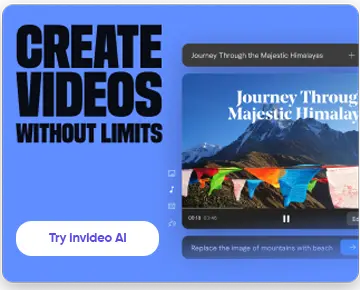According to the 2024 Consumer Research report by Salsify, around 40% of shoppers now consider user-generated content a key factor while purchasing. That’s a clear sign that people want to see how others are actually using a product.
UGC has long played a major role in building trust online, but now it’s also become a smart way to scale content, boost reach, and keep your brand relevant in 24/7 busy feeds. However, making the most out of this totally depends on how you create and share user-generated content on social media so that it aligns well with your audience and goals.
That’s where the importance of a strategy comes in. So, if you are looking for THE guide, keep reading till the end, as you will explore the best tactics to make UGC work for your social media.
Here’s what we have covered ahead:
- Why User-Generated Content Matters on Social Media
- 12 Smart Tactics to Make UGC Work on Social Media
Now, let’s dive right into it!
Create AI UGC Ads
Generate UGC ads with AI that handles scripts, scenes, and edits so you can focus on growth.
 Create now
Create now
Why User-Generated Content Matters on Social Media?
UGC works because people believe people, not ads. The reason is simple – Social media was NOT made for brands. It was made for people. For sharing stories, moments, opinions, and everyday experiences. That’s exactly what user-generated content focuses on, and so, it feels natural on these platforms.
UGC blends in with what social media was always meant for: people connecting with each other. So, when someone posts a genuine review, an unfiltered photo, or just a quick video using a product, it doesn’t feel like marketing but a recommendation from a friend.
And on platforms where people scroll to socialize, not to be sold to, that just makes all the difference. As Leah Agar, Global Social Media Manager at Funnel, shares:
“Consumers are just getting smarter, and if content feels inauthentic, they will just roll their eyes at influencer posts, just like they do with paid ads."
UGC speaks the native language of social media…it’s more personal, casual, and authentic, while traditional ads often feel like another marketing campaign trying to sell.
12 Smart Tactics to Make UGC Work on Social Media
Making UGC work for your social media might sound easy, but the hard fact is that it’s actually becoming saturated. To stand out, you need to have smart strategies in place. Here are our top 12 tips to help you get started:
1. Start with Good Content Ideas
Before you think about user-generated content, ask yourself: Are you putting out ideas people actually give a damn about?
Because well…even the best-looking posts don’t work if the topic doesn’t even click with your audience.
That’s exactly why your ideas matter. If you're always posting content just to stay active, but without a clear point or theme, it will hardly catch any attention. But when it’s about something relevant, timely, or relatable, your audience is more likely to join in or share their own version of that experience.
The best way to come up with stronger ideas is to involve people who are closer to your audience. That could be your social team, customer support reps, or even a few loyal customers who really understand what people want to talk about. Often, the content will flow naturally once you’ve got a solid, ground-level idea behind it!
So, before worrying about formats, captions, or editing, start with the idea itself. If that’s strong, everything else becomes easier!
2. Use Generative AI
Creating enough content to stay active and relevant on social media is one of the biggest challenges for brands and creators. This is especially true with UGC because it depends on your audience actively contributing.
But when there's a gap, either because your audience isn’t sharing enough or you’re trying to scale quickly. Here, generative AI can help fill the gap in a smart, efficient way.
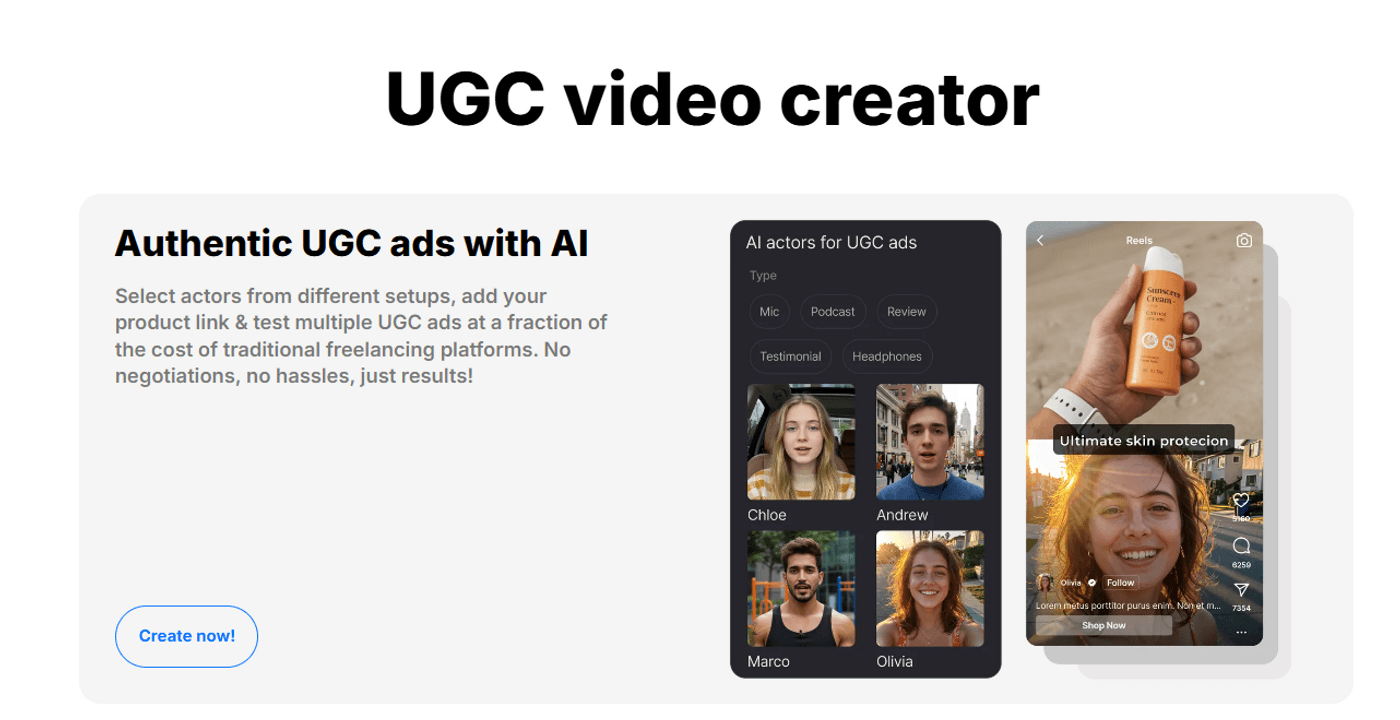
Invideo AI is one such helpful tool that allows you to either choose or create an avatar and then generate personalized video content without starting from scratch every time. You can generate content pieces like:
- Product demos
- Reviews
- Testimonials
- Short-form clips
These can mirror how real users talk about and use your product, ensuring better consistency even on a tight schedule or limited budget.
Let’s say you're promoting a range of Amazon products and want to showcase them quickly, you can generate multiple UGC-style videos without manually filming or editing each one. It’s efficient, scalable, and still feels human, especially when paired with real customer quotes or feedback.
Now obviously, AI-generated UGC shouldn’t replace real customer content, but it works great as a supplement when used smartly. It gives you more control over the message and lets you experiment with formats that might inspire more of your audience to contribute their ideas too!
Create Videos with AI Influencers
Select AI influencers, add your product, and test multiple UGC ads without high costs.
 Try now
Try now
3. Go Beyond Hashtags for Better Engagement
Hashtags are useful, but they’re not enough on their own. If you want to put out more meaningful UGC, you’ll need to see how your audience is already interacting with your brand. Check on your socials:
- Are they writing reviews?
- Are they leaving comments on your posts and reels?
- Are they asking genuine questions, or tagging you in their posts?
These smaller moments might not show up in a campaign feed, but they’re often more real and more useful. A quick thank-you or response can always go a long way in building trust and encouraging people to speak up or post their own experiences.
So, instead of focusing only on branded hashtags, try to build a full picture of how your audience is engaging, and make sure to include those pieces in your overall content mix.
4. Ask Your Audience to Share Ideas
Sometimes, people don’t need a polished campaign to start sharing. They just need to be asked.
And this…can be a simple question like “What do you want to see next?” or “Got a fun way to use this product?” These can open you to new content and fresh ideas. And when people feel like their input matters, they’re more likely to stick around and keep engaging.
Asking for ideas also helps you learn what kind of content your audience actually enjoys. You don’t have to guess…just listen. Maybe they want:
- More tutorials
- Some real-life use cases
- Even funny takes on your product.
Once you know, you can start shaping your content around what people already want to see. However, it is always a good practice to give them the due credit. When someone shares an idea and you turn it into a post or a video, tag them or thank them.
It’s a simple gesture, but it shows that you're building something together. That kind of interaction builds loyalty and often leads to more people getting involved with your brand.
5. Talk with Your Customers
A lot of brands make the mistake of only talking ‘to’ their customers instead of talking ‘with’ them. But if you want to gather user-generated content that actually feels meaningful, make it a space for two-way conversations. That means stepping away from just announcements or polished marketing posts and showing up where your audience is active and listening.
This could be as simple as replying to comments thoughtfully, asking open-ended questions in Stories, or just sharing updates about your day. Here's an example of how Jen, a thriving UGC creator in the lifestyle and wellness niche, does this often:
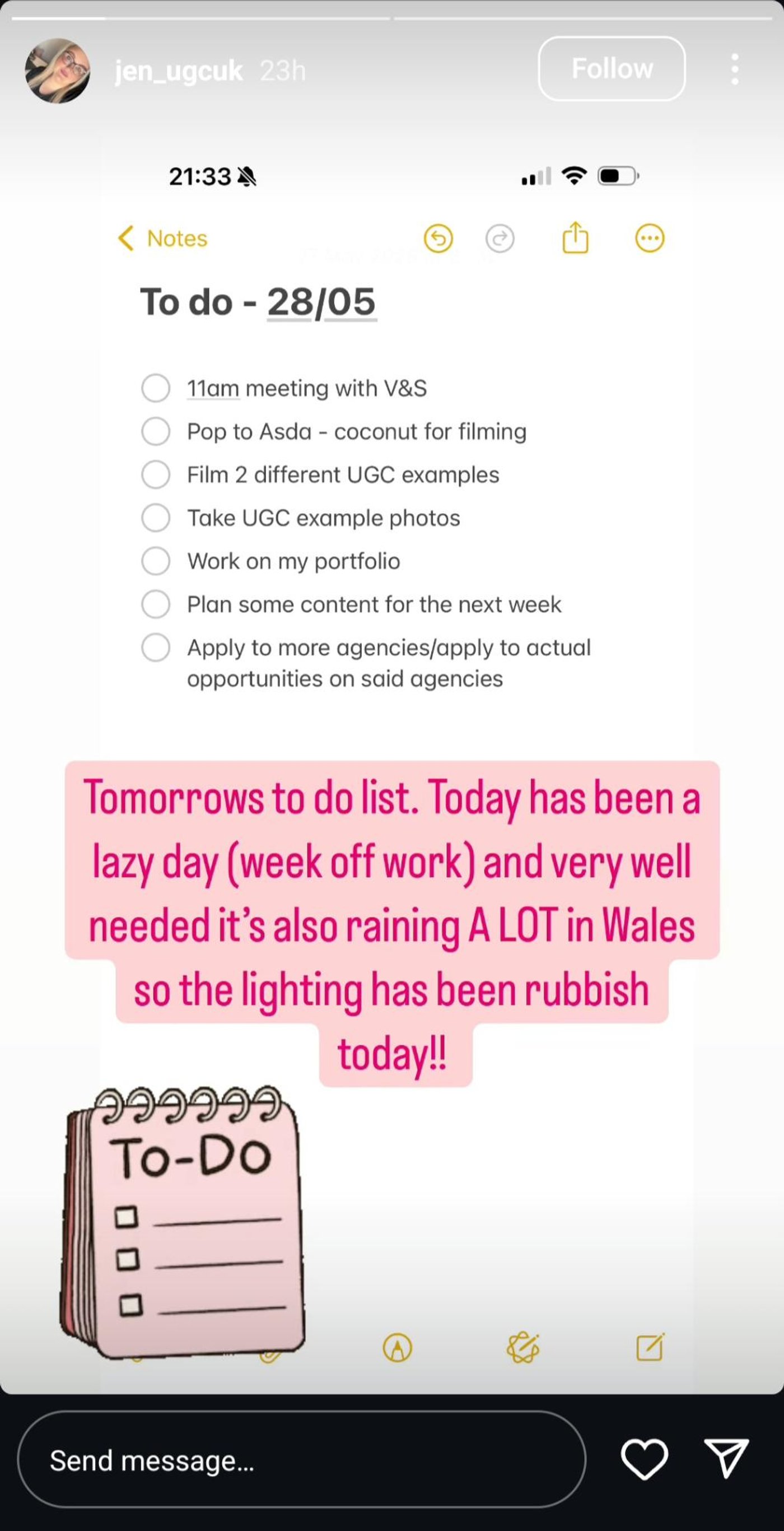
Talking with your customers also gives you valuable insights into what kind of UGC to encourage. You start to notice patterns in the way people talk about your products.
What they love, what surprises them, and what problems it solves. These real stories are gold as they not only give you ideas for what to spotlight in your marketing but also help future users see themselves in those same situations.
6. Share Reviews and Testimonials
When people are thinking about trying something new, one of the first things they look for is proof that it works for someone like them. That’s where reviews and testimonials shine, as they feel like real experiences, which makes them incredibly persuasive.
It can be a short quote in a social post, a full testimonial on your website, or a screenshot shared in Stories, these small moments help future customers feel more confident about their choices. Here’s how Renee Gower, a full-time UGC creator, has presented her testimonials in the Highlights section.
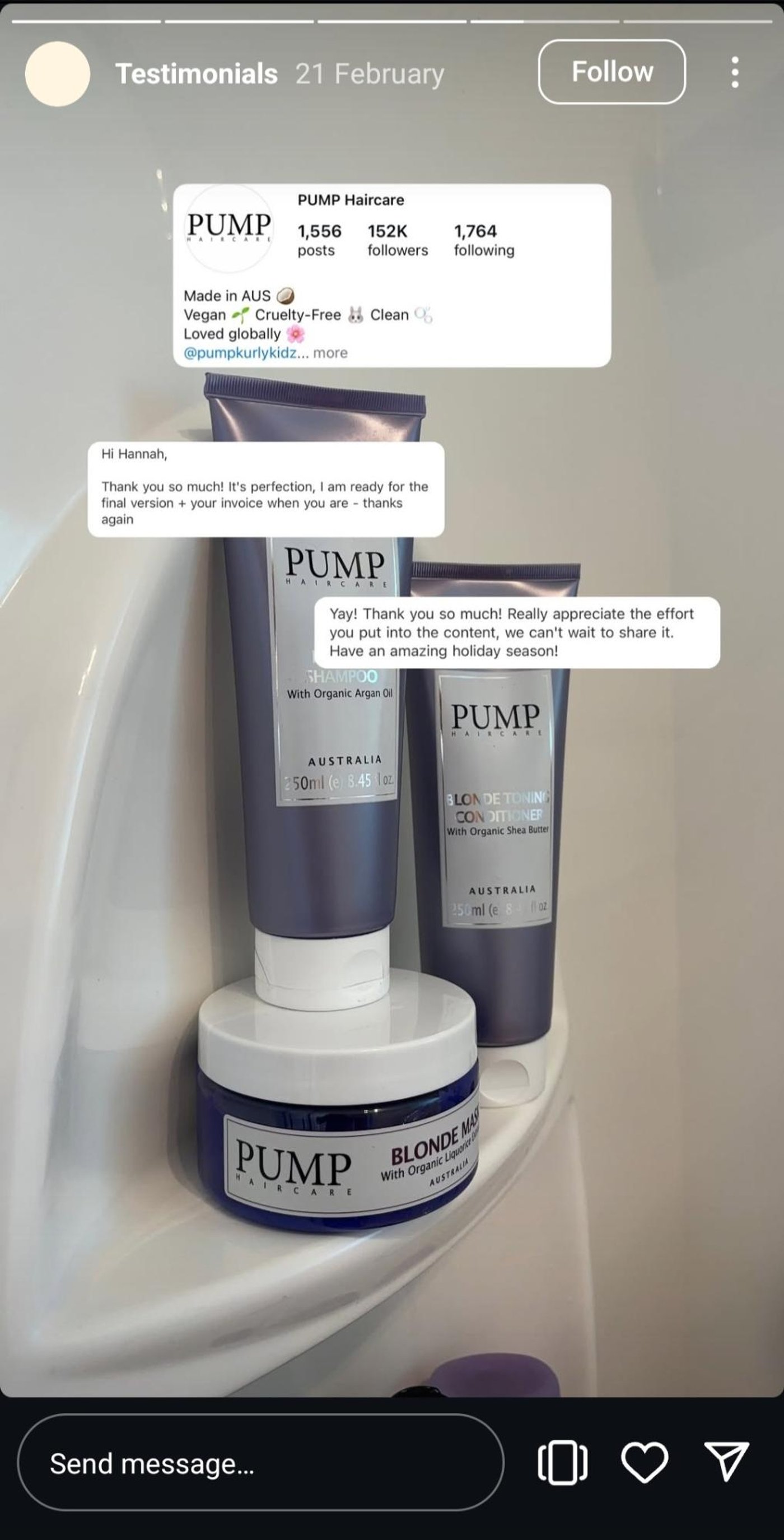
To make the most of this strategy, consider turning reviews into a regular content series. Not only does this give your existing customers proof of your work, but it also increases your credibility. Over time, this creates a cycle where authentic content flows naturally.
7. Give Clear Rules and Rewards
People are more likely to participate in your campaigns if they know your expectations and rewards are clear. That’s why clear rules and rewards are so important when you’re trying to encourage user-generated content. If the process feels confusing or the reward seems vague, most people won’t bother, even if they love your brand.
Start by making the structure simple and easy to follow. For example, if you are hosting a giveaway, clearly mention the steps – what to post, where to share it, how to tag your brand, and what kind of content you’re looking for, etc.
This removes hesitation and gives your audience the much-needed confidence to take action. Here’s an example of how low.key.icon has recently curated a giveaway for their followers:
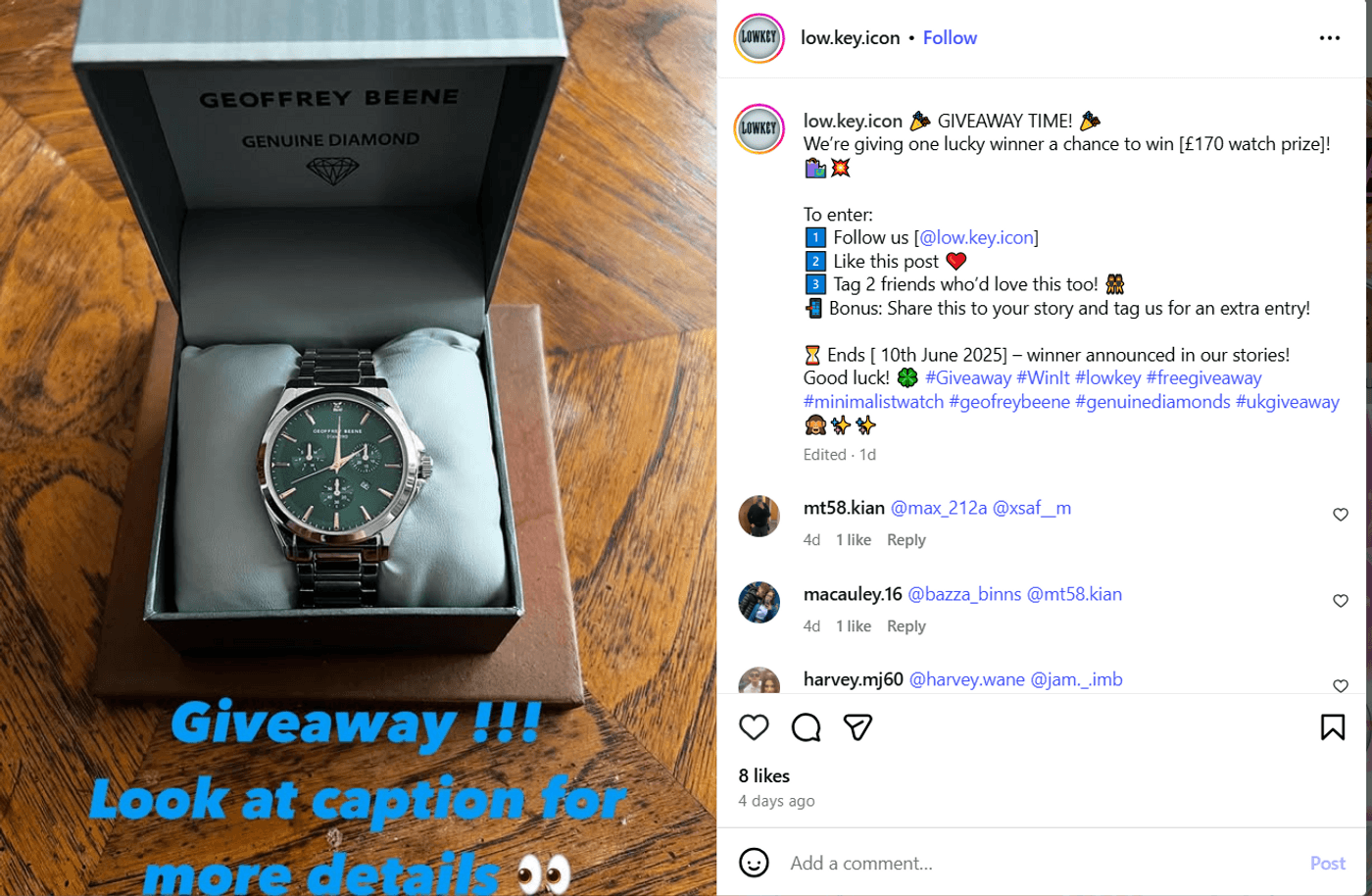
To make this work even better, feature the winners on your page or give them exclusive early access to a product. It’s the emotional reward of recognition and feeling part of your community, which keeps them engaged.
8. Build a Strong Brand Community
UGC works best when people feel seen, heard, and connected – not just with a brand, but to each other. That’s why building a strong community is one of the most effective long-term strategies for encouraging UGC.
To make this work, you need to give people a reason to stick around and engage even when they’re not buying something. That could mean creating private groups on platforms like Reddit or Discord. On Instagram, you can create channels for your followers to share regular updates about the brand, and also hear from them.
Teva has adopted a similar strategy to build a community of its followers and engage more closely with them.
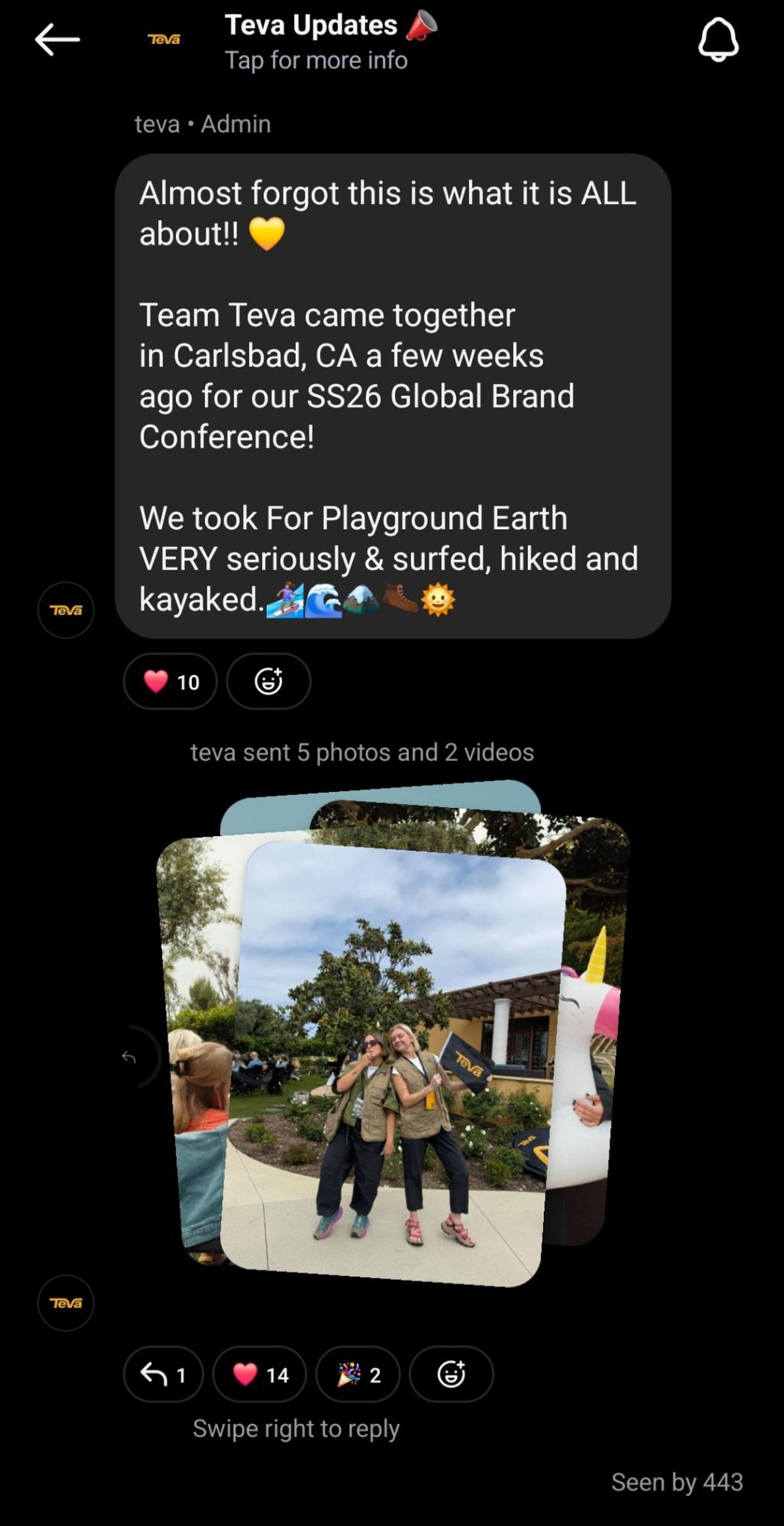
Apart from this, it's also good practice to promptly reply to comments, highlight real customer stories, or start conversations around the interests your audience truly cares about.
Over time, these efforts start to build trust, and trust leads to advocacy. A customer who feels invested in your brand emotionally is much more likely to post about your products, tag you in their content, or even defend you during tough times. These are the kinds of loyal contributors who generate authentic content without being asked.
9. Make Posts Fun and Interactive
Here’s a sweet truth: people don’t always want to be marketed to, but feel involved. Making your posts interactive is a simple way to turn passive followers into active participants. This is especially powerful when you want to gather user content without feeling pushy at all!
Polls, quizzes, questions, or even simple “this or that” posts can work wonders. These formats create low-pressure entry points that feel more like a conversation than a campaign. When people see their input reflected in future content, they feel valued, and that makes them more likely to keep showing up and sharing.
For example, Sugar Britches Bakery – a US-based small business, often posts in the “this or that” format:
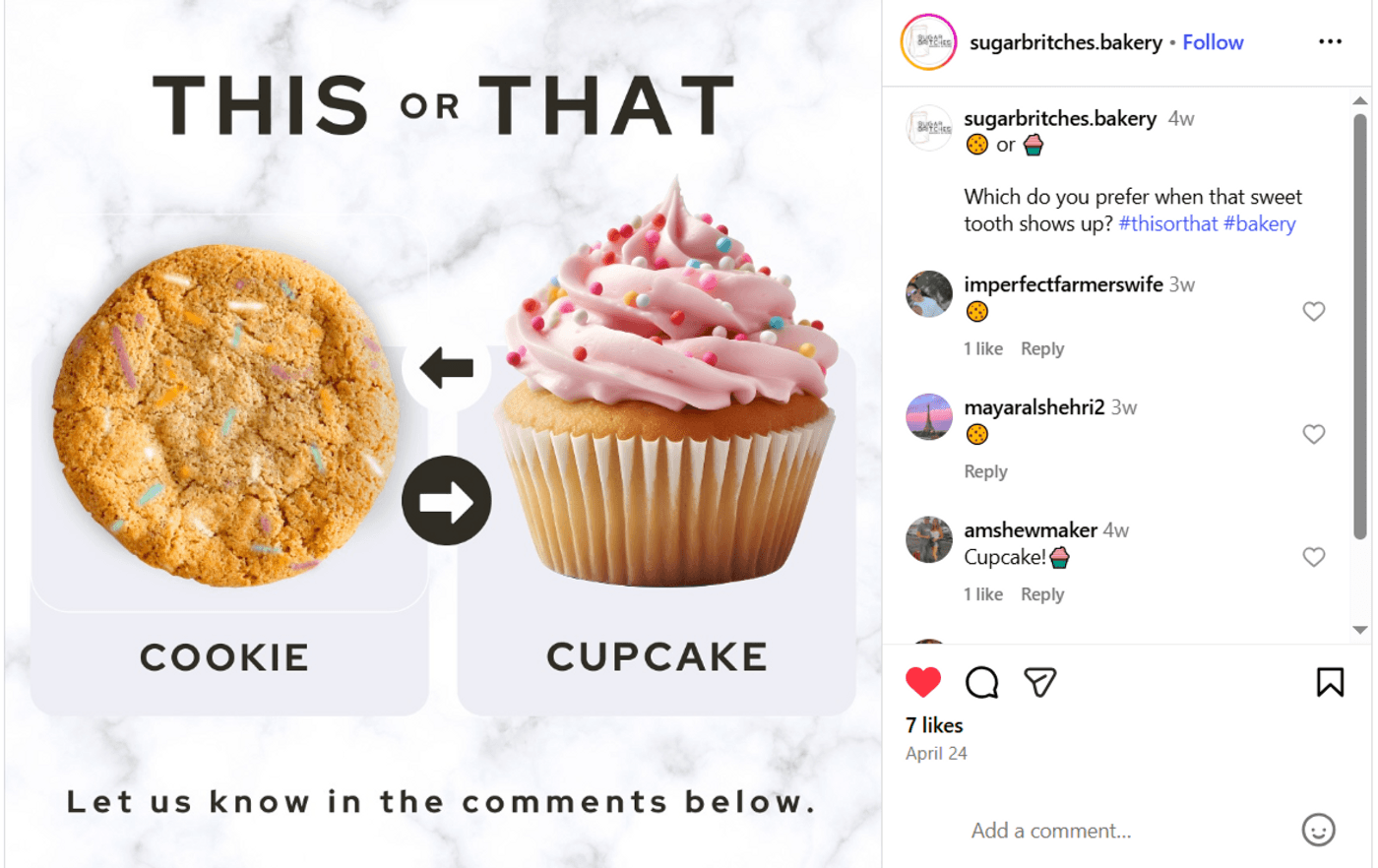
You can also tie such interactive moments into your product story. For example, asking followers how they use your product in their daily routine or what feature they love most can organically lead to UGC. All of these responses can become useful insights that you can use for content ideas or repurpose existing content.
10. Use FOMO to Get Attention
No one likes feeling left out, especially on social media. In psychology, it’s called “loss aversion,” which means we react more strongly to missing out on something than we do to gaining it.
Guess what? That’s exactly why FOMO (Fear of Missing Out) is such a powerful motivator in marketing.
Whether it’s just a product challenge, giveaway, or content campaign, the idea that others got in on something cool, and they didn’t, can push people to take action next time. The beauty of this approach is that it builds a kind of ripple effect.
One person’s post creates curiosity, which brings in more people. And the more people participate, the more you can pick up on that behavior to turn user content into a routine part of your brand story.
Note: This works even better when your campaigns are time-bound or limited in scope. For example, if you feature just a few standout customer posts each week, people will naturally want their chance to be in the spotlight too. And if you tie it to a challenge or trend, they’ll feel that social pull to be part of what everyone else is doing!
Make Videos with AI Actors
Generate videos with AI actors who deliver your message perfectly every time.
 Try now
Try now
11. Use Clear and Direct CTAs
Even if people want to engage with your content, they won’t do it if they’re confused about what you’re asking. That's why a direct and simple call-to-action (CTA) makes all the difference by giving your audience a clear next step, something their brain can catch up on.
So, any vague instructions like “Share your thoughts” or “Tell us what you think” often go ignored.
Why? Not because people don’t care about your content, but because it’s not clear what you're expecting from them.
Instead, use personalized and specific CTAs as they tend to perform 202% better than basic ones.
For instance, “Tag us in a video of your skincare routine,” or “Post a photo of your weekend setup using our gear and use #WeekendWithUs.” These work because they create a mental image of what the user needs to do, and that clarity lowers the effort it takes to act.
12. Show UGC on Social, Email, and Website
Creating UGC is only half the job. The other half is making sure it’s seen in the right places. People need to see social proof to feel safe about making a decision, and UGC is one of the most effective forms of social proof there is. It tells new customers that others have tried this, and they’re happy with it.
So, the more visible your user content is, the more credibility it builds. But to really tap into that power, you need to spread it across all your brand touchpoints.
- Social Media: Highlight real user stories and reactions, especially in formats that feel casual and relatable. Instagram carousels, Reels, TikTok compilations, or even Stories with reshared posts work great.
- Email: Feature a customer spotlight or a rotating review section to keep your communication fresh and engaging.
- Website: Add customers’ photos, quotes, or video clips on product pages or FAQs that can influence buying decisions in a subtle but powerful way.
When your branding as a UGC creator is consistent across all these platforms, it reinforces the idea that your personal brand is community-driven. Naturally, this alignment makes users more likely to share content with you, hoping to see themselves featured next.
Frequently Asked Questions
1. Do I need to ask permission before sharing UGC?
Yes, always ask for permission or make it clear in your campaign rules. It builds trust and avoids legal issues.
2. Can UGC work for service-based businesses, too?
Yes, absolutely. You can go for reviews, before-and-after posts, and client stories, as they can easily serve the purpose.
3. Is UGC still effective if I have a small following?
Yes! You can still attract organic engagement, but make sure to maintain genuineness and transparency because that's the core essence of UGC.
Build UGC Campaigns with AI
Generate UGC videos fast using invideo AI with scripts, edits, and voiceovers.
 Generate now
Generate now
Final Thoughts
What people say about your brand matters more than what you say about it. And on social media, authenticity is everything. When real customers share their honest experiences, it creates trust that’s far beyond even any well-planned marketing message. But you will always need a strategic approach to share user-generated content on social media and make it work for the brand!
If you want to learn more about creating videos with AI & enhancing your content creation journey, you should definitely check out our YouTube channel.
Here are some other helpful resources to learn how you can do a lot more with AI to make money online:


